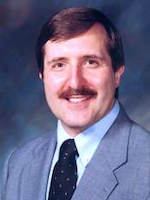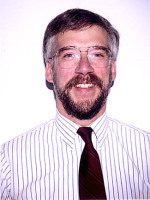Two UW-Madison engineers named to National Academy of Engineering
On Thursday, Feb. 5, the National Academy of Engineering (NAE) announced it has named two University of Wisconsin–Madison engineering professors to its 2015 class of new members.
Grainger Professor of Power Electronics and Electrical Machines Thomas M. Jahns and Steenbock Professor of Engineering Physics Raymond J. Fonck are among the 67 new members and 12 foreign members elected to the NAE in 2015. Election to the NAE is among the highest professional distinctions accorded to an engineer, and membership honors those who made outstanding contributions to engineering research, practice or education.
The academy cited Jahns for his work advancing permanent magnet machines and drives for transportation and industrial applications, while it cited Fonck for advances in fusion plasma spectroscopy diagnostics and leadership of the U.S. fusion program into the burning plasma era.

Raymond J. Fonck
Fonck, who earned his UW–Madison bachelor’s degree in physics in 1973 and his Ph.D. in physics in 1978, joined the Department of Engineering Physics as a professor in 1989. He has played a major role in advancing fusion energy research at UW–Madison, including his leadership of the Pegasus Toroidal Experiment, and deployment of novel plasma diagnostics on national fusion facilities. He has also participated in national efforts to improve communication and coordination among fusion researchers across the country and internationally.
Fonck also spent 11 years at the Princeton University Plasma Physics Laboratory, where his research accomplishments included developing charge exchange recombination spectroscopy for measurements of ion temperature and fusion products in confined plasmas.
In 2006, Fonck was named chief scientist for the U.S. International Thermonuclear Experimental Reactor (ITER) Project Office, serving as the liaison between U.S. plasma- and fusion-science researchers and a group that is building the U.S. share of ITER. ITER is an international fusion experiment in Cadarache, France, that eventually could lead to fusion power being realized as an abundant, economical and environmentally benign energy source. In his role as chief scientist, Fonck helped the project office answer scientific questions that arose as the U.S. portion of the project developed. Between 2007 and 2008, Fonck took a leave of absence from UW–Madison to serve as head of the Department of Energy Office of Fusion Energy Science.
A highly respected figure in the fields of experimental physics and fusion research, Fonck has received many prestigious professional honors, including the 1999 John Dawson Award for Excellence in Plasma Physics Research from the American Physical Society. His numerous UW–Madison honors have included the Mid-Career Achievement Award and the Byron Bird Award for Excellence in Research. Fonck is a fellow of the American Physical Society, and a member of the AAAS and the IEEE. He was named a national associate of the National Research Council of the National Academies in 2008. He also has served as president of the University Fusion Association.

Thomas M. Jahns
Jahns joined the UW–Madison faculty in 1998 as the Grainger Professor of Power Electronics and Electric Machines. In the professorship, which he still holds, Jahns makes pivotal contributions to energy-efficiency research in the Department of Electrical and Computer Engineering; contributes to the interdisciplinary culture of UW–Madison energy research through the Wisconsin Energy Institute; and serves as co-director of the Wisconsin Electric Machines and Power Electronics Consortium (WEMPEC), the largest public-private partnership in the field.
Jahns came to UW–Madison with an already well-rounded background in both academia and industry. After earning his Ph.D. in electrical engineering from MIT in 1978, Jahns served as a senior engineer at Gould Research Laboratories, then went on to serve in numerous roles in a total of 13 years at GE Corporate Research and Development. From 1996 to 1998, he returned to MIT as a senior lecturer and co-director of the MIT Consortium on Advanced Automotive Electrical/Electronic Components and Systems.
An expert in power electronics, drives and power conversion, Jahns has studied areas ranging from developing permanent magnet machines used in nearly all hybrid- and battery-electric vehicles to exploring how renewable energy can be best integrated into the utility grid system. He has been instrumental in forging powerful academia-industry collaborations focused on advancing clean energy technologies, including the Johnson Controls-supported Advanced Systems Test Lab, where UW–Madison researchers and industry scientists work together to shape the future of batteries and other types of energy storage systems. Jahns has also advanced the finer design points of specific machines and examined how old and emerging energy technologies can be combined in dynamic grid systems.
Jahns has earned numerous prestigious awards throughout his time in both academia and industry, including the IEEE Nikola Tesla Technical Field Award in 2005 and the IEEE Industry Applications Society Outstanding Achievement Award in 2011, and was named an IEEE fellow in 1993. He has been very active in IEEE, including service as president of the IEEE Power Electronics Society from 1995 to 1996 and an elected member of the IEEE Board of Directors from 2001 to 2002.
This year’s new NAE members also include Deepak Divan, a former UW–Madison professor of electrical and computer engineering, who currently serves as president, chief technical officer and co-founder of Varentec Inc. in San Jose, California.
—Scott Gordon and Adam Malecek
